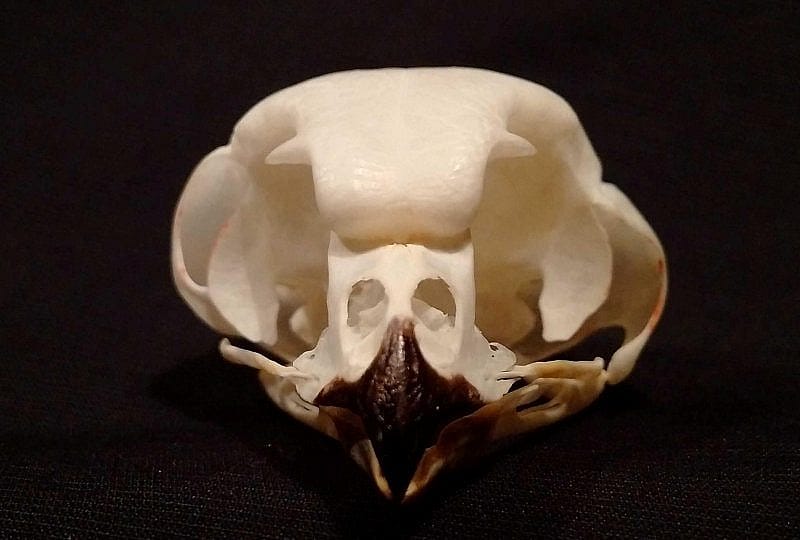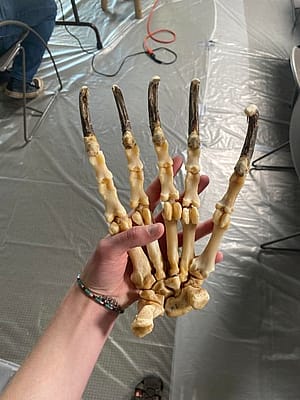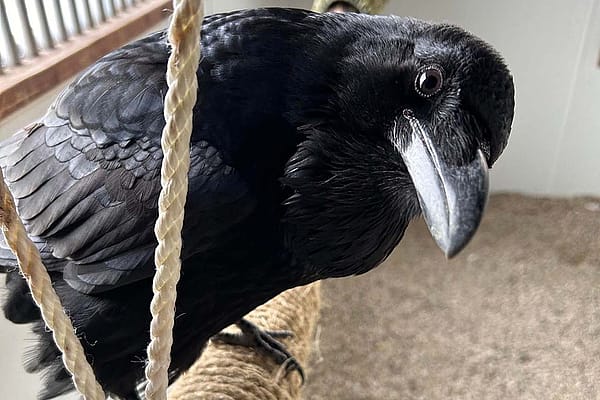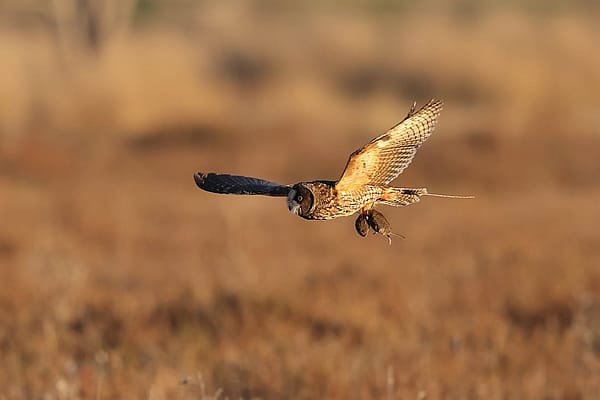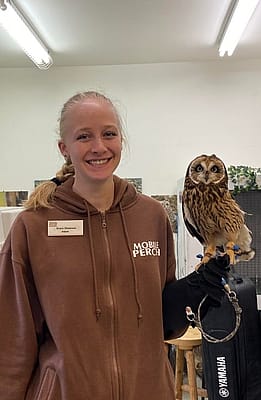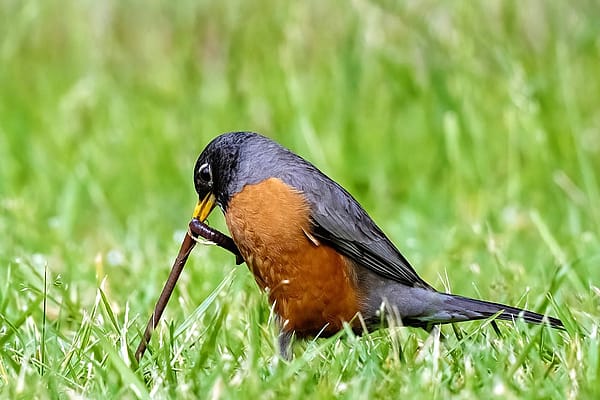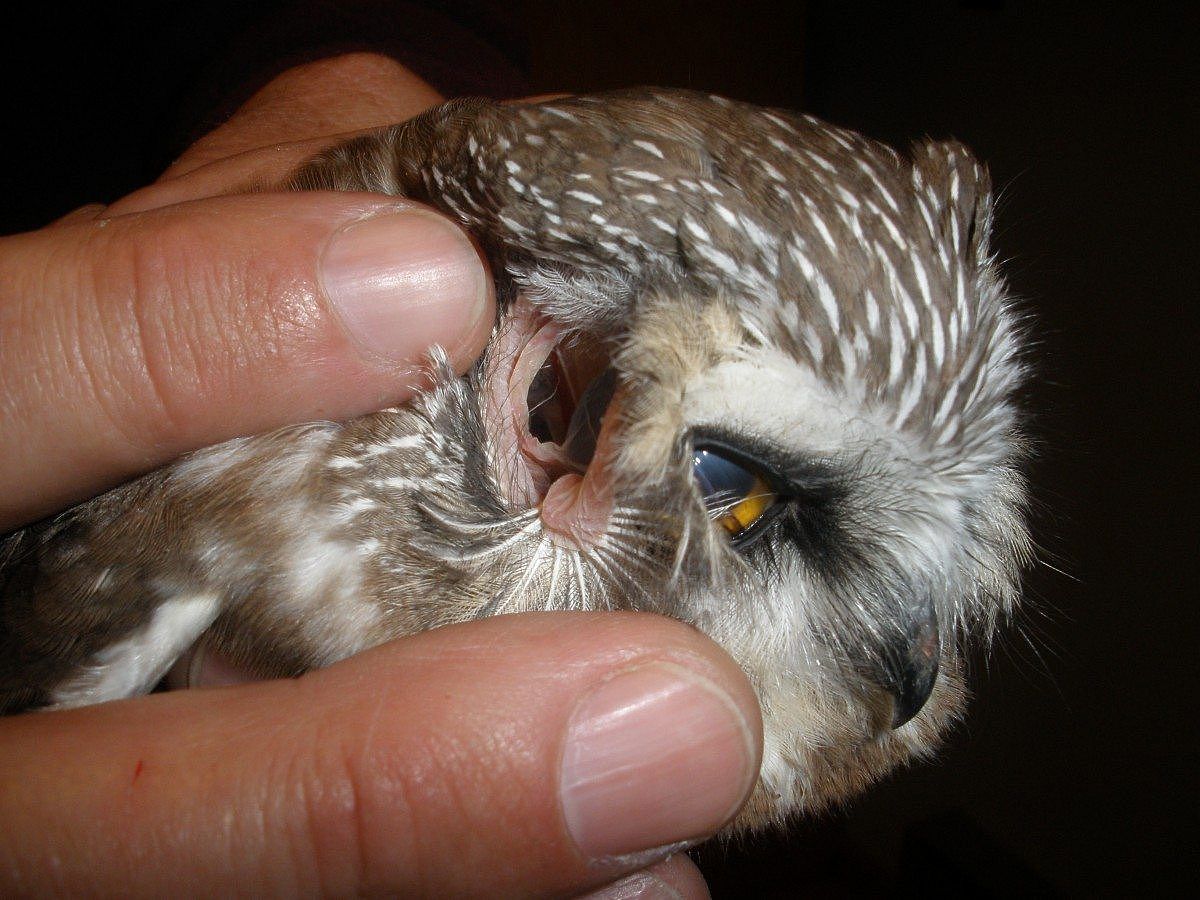
It’s hard to hide from an owl! Part 2: The Ears
Hello, it’s Katie again! Everyone ready to hear more about owls?! Hooray!
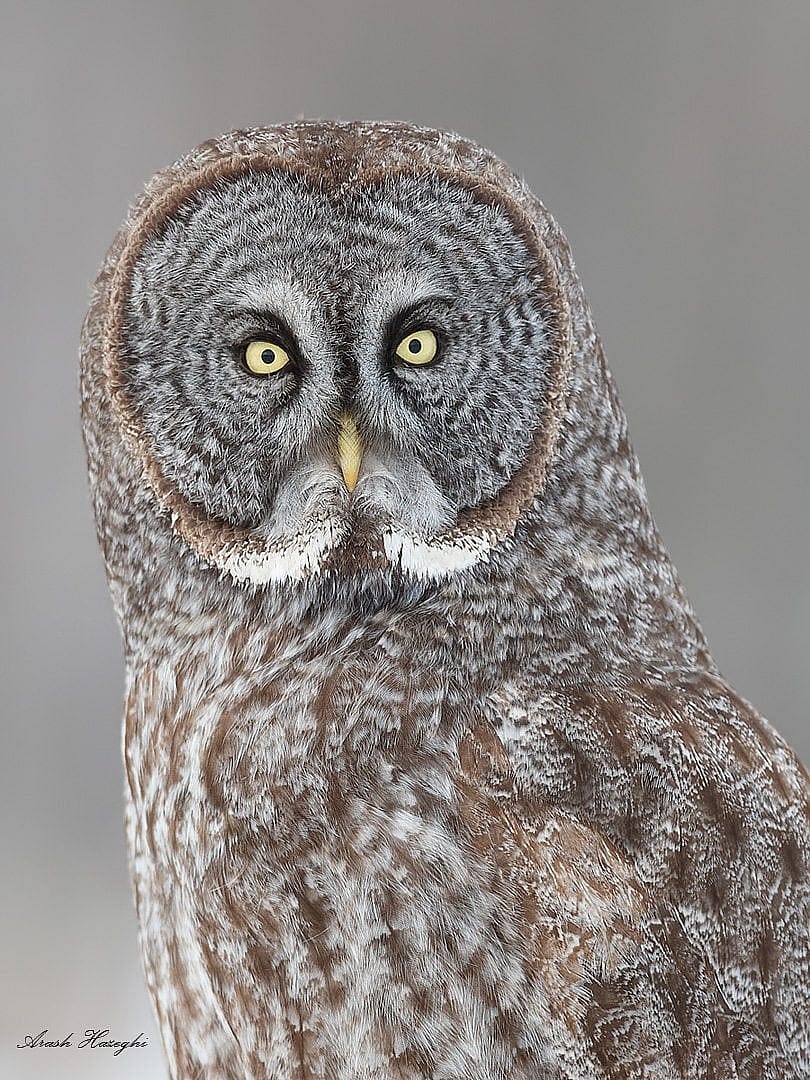
Owls have superb hearing, some of the best in the animal kingdom. Why is that, you ask? Well for one, the shape of their face makes for excellent hearing: have you ever noticed how flat their faces look? This is because owls have facial discs that are surrounded by a ring of feathers that help gather sound like a satellite dish collects signals. Each of those feathers is movable and can change position to better funnel sound. That sound is channeled through the feathers to their ear holes on the side of their head.
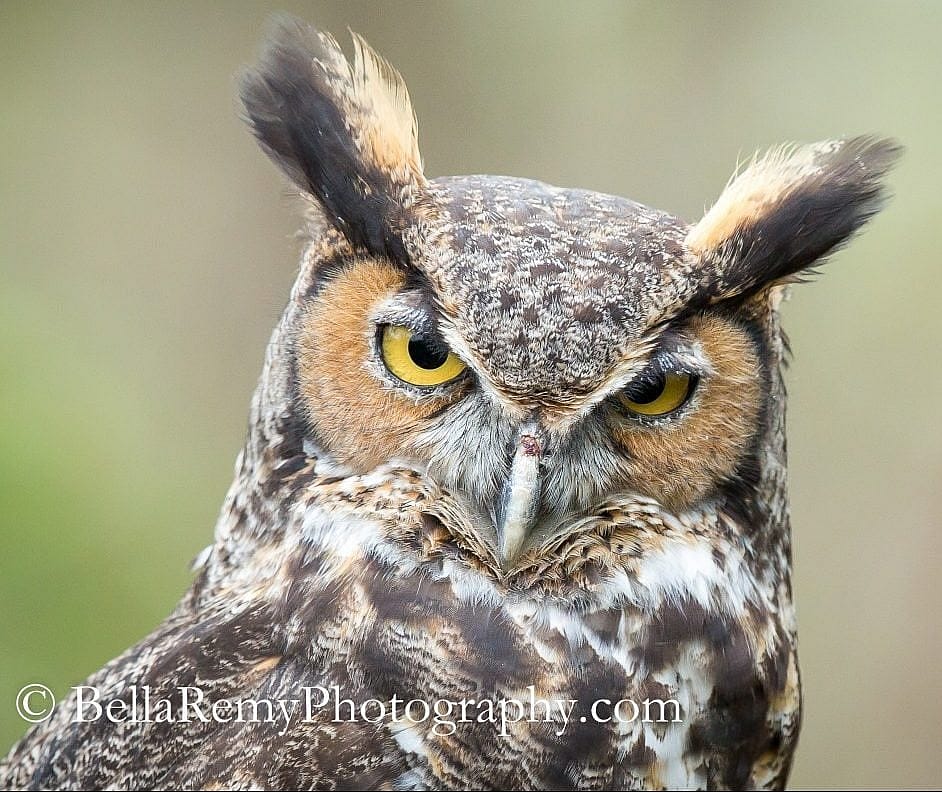
Wait, holes? But you heard their ears stick up! Those “ears” that stick up are actually feathers called plumicorns. They help with camouflage and communication with other owls but not with hearing. Their ears are actually on the sides of their head, just like yours! The ears are covered and protected by feathers and some owls even have flaps to protect the ears. This doesn’t hinder their hearing because the flaps are movable and can actually decrease the noise of turbulence during flight!
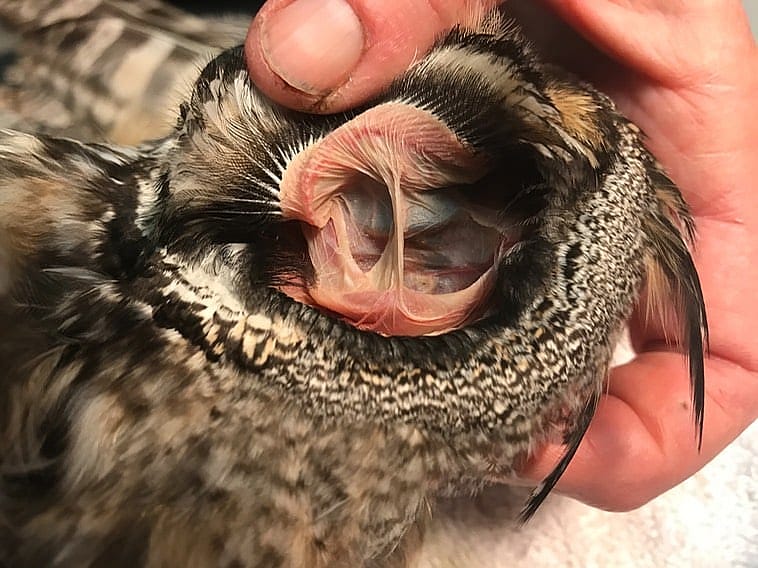
The ear holes themselves are super special too: they are asymmetrical. This means that one ear is higher than the other which is very helpful when it comes to hearing. With offset ears, the owl can tell not only if a sound is coming from the left or the right, but also from above or below. This setup is perfect for triangulating where a sound is coming from, sometimes to within millimeters of its origin. That triangulation allows an owl to swoop down, punch through a foot of snow, and pull out a mouse it has never seen! This asymmetry varies across owl species; some, like the Northern Saw-Whet skull pictured, have huge differences in the placement on the skull. Other species have their earflaps facing in different directions but the skull is less distorted-looking. Isn’t that amazing?!
Even cooler, many owls have a great ‘sound-location memory’ – this means that when they hear a sound, they make a map in their brain of where that sound is coming from relative to their location. They can do this because special cells in a distinct part of their brain are sensitive to sounds in different areas. This allows them to find the sound later. Try to think of it like this: if you have ever played marco polo or blind man’s bluff with friends, you’ll remember that when your eyes are closed you still usually have a good idea of where people are around you. This is because you can hear them and place them on your own ‘mental map.’
Finally, much like dogs, owls can hear a broader variety of sounds than we can and can also hear more details in the sounds. According to ProjectBeak, they can also “hear faster…humans can process sounds in bytes about 1/20 of a second long, but birds can distinguish notes up to 1/200 of a second. This means where we hear only one sound, a bird may hear as many as 10 separate notes!” Regardless of what you may hear about them, owls have some incredible hearing abilities. It makes you wonder what we humans are missing!
I hope you all enjoyed this blog today! Tune in next week for part 3, where I’ll talk about some awesome anatomical adaptations that allow owls to be amazing predators!
References:
http://projectbeak.org/adaptations/senses_ears.htm
http://www.bocn.org/factfile_detail.asp
http://people.eku.edu/ritchisong/birdbrain2.html
http://kayjayr-akshay.blogspot.com/2016/02/science-of-hearing-iii-hearing-in.html
Written By
Melissa Hill
While earning her Bachelor's Degree in Wildlife Management at the University of Wyoming, Melissa began volunteering at Laramie Raptor Refuge and was instantly hooked on birds of prey. Since those early days, she has worked with nearly 70 different raptors at four different raptor education groups in three states. She is a former member of the Education Committee for the International Association of Avian Trainers and Educators (IAATE) and a National Association for Interpretation's Certified Interpretive Guide. When she's not "playing with the birds" she enjoys spending time quilting, crocheting, and exploring the Greater Yellowstone Ecosystem with her non-bird family.
